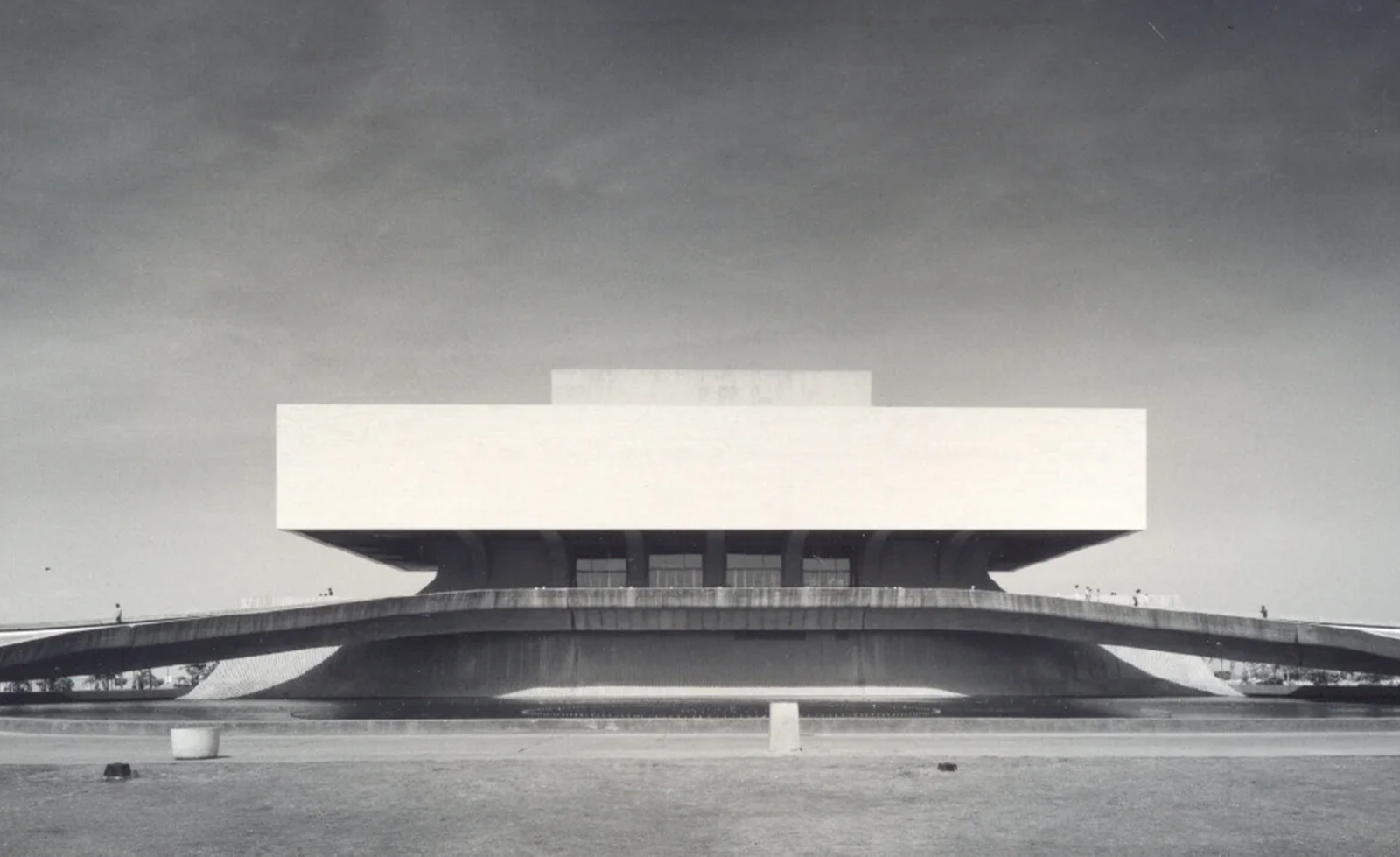Words Gabrielle de la Cruz
Images Kanto archives (Leandro Locsin)


“A work of architecture becomes iconic only when society finds that it resonates on so many levels — when it captures a spirit and an idea that is relevant to and valued by those who view it, inhabit it, and use it over time,” said National Artist for Architecture Leandro V. Locsin. His fidelity to this philosophy gave birth to a new architectural language in the Philippines, and his built legacy continues to serve as a visual representation of our nation’s identity.
Often regarded as an artist-architect, Locsin was known for marrying sculpture and architecture. His works, such as the Tanghalang Pambansa (National Theater) and Philippine International Convention Center (PICC) at the Cultural Center of the Philippines Complex, exemplify his signature style of floating volumes, clean lines, and massive form. We commemorate his 96th birth anniversary today by retracing his journey of navigating a pre-law education to a post-war architecture career, looking at his concrete vision for the Philippine architecture landscape.




It isn’t new to some, but architecture was not the National Artist’s first choice. Born in Silay, Negros Occidental, Locsin moved to Manila for his education. He had to return to his hometown due to the Second World War, but went back to first studying pre-law at De La Salle College (now De La Salle University). Records say that he transferred to the University of Santo Tomas to pursue a degree in music, but destiny traded books and bass notes for beams and building lines. Locsin shifted to architecture only a year before graduating and completed the degree in 1953.
In a presentation during B+Abble 2021, the son of the late Locsin, Leandro “Andy” V. Locsin, Jr., said that like many architects, Locsin’s career began with commissioned work. His first-ever is the Church of the Holy Sacrifice at the University of the Philippines Diliman, a precedent to the now-recognized look and feel of a Locsin-penned building. The church is said to be the country’s “first venture into thin-shell experimentation” and was cited by Esthel Pangilinan’s Colonial and Post-Colonial Architecture study as a building that “also accelerated the beginning of modern architecture in the Philippines.”


The architect was able to dig deep into his approach when he visited the United States and met Eero Saarinen and Paul Rudolph, whose curvilinear and brutalist signatures influenced his style. More commissions lined up when Locsin went back to the Philippines, with the National Commission for Culture and the Arts (NCCA) recording his 1955 to 1994 production at 75 residences and 88 buildings, including 11 churches and chapels, 23 public buildings, 48 commercial buildings, six major hotels, and an airport terminal building. His practice, Leandro V. Locsin Partners, was established in 1955.
Arguably his most prominent work can be seen at the CCP Complex, the site of the Tanghalang Pambansa, PICC, and Folk Arts Theater. The Complex of Social Welfare Agencies, which houses the recently declared Important Cultural Property Nutrition Center, is also by Locsin.




View of the main stair of the National Theater (1966), CCP Complex, Manila, ©Akio Kawasumi 

Abstraction in the silhouette of the L. V. Locsin Building (1979), Makati City, ©Jean-Claude Girard
Locsin went from complex to city, designing most buildings within the Makati Central Business District. This includes Ayala buildings namely Ayala Building 1, Ayala Museum, Ayala Triangle Tower One, and L.V Locsin’s 19-storey office. A number of these structures remain standing and active up to this day, but a concerning number have also been subject to threats of and actual demolition.
In 2022, news broke on the demolition and delisting of the Ramon Cojuangco Building along Legazpi Village as an Important Cultural Property. Left and right reactions were gathered following the announcement, but the discussion centered on the lack of protection and respect that befits a National Artist’s work. The shutdown and demolition of the 41-year-old Greenbelt 1, said to be Locsin’s only mall project, has also been announced in April.


Locsin’s NPC Buildings in Quezon City are currently under threats of redevelopment by their building owners, with the architecture community and heritage advocates calling in favor of these buildings as Important Cultural Property. A position paper was recently published by heritage documentation group Brutalist Pilipinas to appeal to NCCA and the public.
The recognition of buildings designed by National Artists such as Locsin, be it for their contribution to the built environment or our national and cultural identity, remains a responsibility. It is, after all, not just how they were built, but what they stand for, that calls for their protection and conservation.
We end this tribute by going back to Locsin’s philosophy, which underlines the role of communities in shaping and preserving architecture. The relevance of these buildings lies not in how they look like years from their foundation, but in how people choose to see them. In the words of Andy Locsin, “And whether it starts out as this iconic thing, at the end of the day, is there relevance? Yes, there is, if people continue to use it and value it.” •
Information obtained from Leandro Locsin, Order of National Artists by National Commission for Culture and the Arts (NCCA), Docomomo: the churches of leandro v. locsin by Jean-Claude Girard, and Pangilinan, E. (2021) Colonial and Post-Colonial Architecture.


One Response